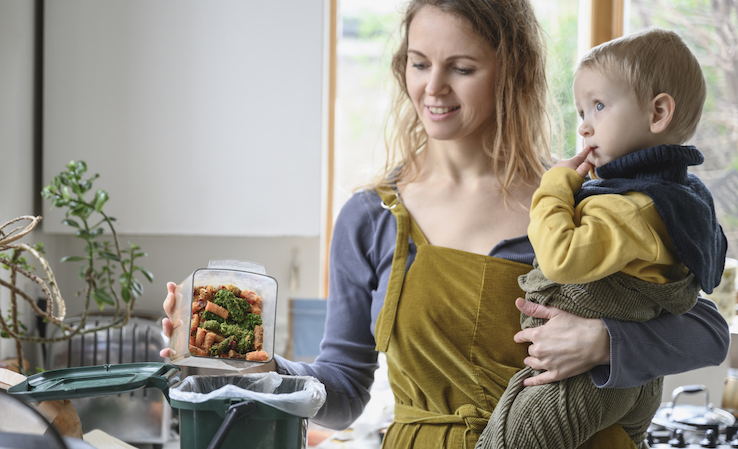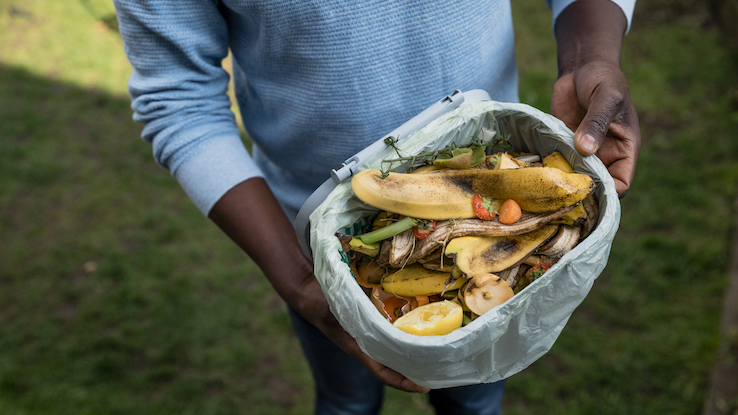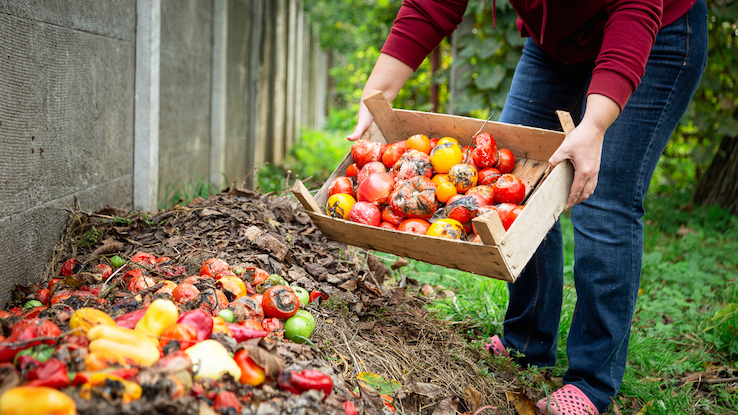Your Green Routine: How to Start Composting at Home

Composting is the process of recycling organic materials, such as food scraps and yard waste, into organic fertilizer that can help plants grow. If you’re looking to cut down on your environmental impact while giving your garden a boost, composting is an effective practice that can help you with these goals. Join us for a look into what composting is, what benefits come along with the process and how you can get started composting at home.
How Does Composting Address Environmental Issues?
To see how much good composting can accomplish, it helps to understand the problems it solves. According to research from the National Resources Defense Council (NRDC), up to 40% of food purchased in the United States goes uneaten each year. Not only is this an alarming statistic in relation to inequality in food access around the country, but it also has damaging environmental effects.
When organic waste like food and yard scraps ends up in landfills, it emits methane, a potent greenhouse gas. According to NPR, a family of four in the United States may create 1,800 pounds of these food waste emissions per year, which breaks down to 440 pounds per individual annually. Composting, on the other hand, can help people reverse this trend by greatly reducing methane emissions.
According to the EPA, the benefits of composting go beyond a significant reduction in methane emissions, however. Composting recycles organic waste into a rich fertilizer that can enhance water retention in soil and reduce the need for chemical fertilizers. The use of compost as fertilizer can also increase crop yields, aid in reforestation and remediate contaminated soils.
What Kinds of Things Can You Compost?

You’re interested in doing your part to lower your greenhouse gas emissions — but what kinds of things should you actually keep out of the landfill? The EPA has a handy list of composting candidates that’s surprisingly extensive. It turns out that there are plenty of items that qualify for your compost pile, including the following.
Food Waste: Many people get started by adding key kitchen-waste ingredients into their compost bins — but it’s important to note that not all types of food waste are cut out for your composting adventure. Steer clear of dairy products, meat, bones, fish and grease. Stick to things like fruit and vegetable scraps, eggshells, coffee grounds, tea bags and nut shells.
Paper Products: As it turns out, you can also compost things like shredded newspapers, cardboard and other paper products that haven’t been chemically treated or coated in plastic.
Yard Waste: This covers everything from yard and grass trimmings to houseplants. You can even throw in hay, straw, leaves and wood chips. The only exceptions here include diseased plants and lawn products that have been treated with pesticides or other chemicals.
Other Compost Candidates: You might be surprised to discover some of the other by-products you can compost. Things like sawdust, rags made from cotton and wool, fireplace ashes (steer clear of coal and charcoal ash), and even hair and fur are all good candidates for your bin. Steer clear of pet waste and litter, however, as it can contain germs that might contaminate your batch of compost.
The Role of Browns and Greens
No matter the size or location of your compost site (more on that soon), it’s important to understand the process of layering. All compost can be divided into two basic categories:
- Browns include branches, sticks, dead leaves, straw and dry items.
- Greens include fresher items like grass clippings and fruit and vegetable scraps.
When you first start composting, you don’t want to start throwing just any old (organic) thing into the mix. You’ll want to begin your pile with a layer of browns on the bottom and then alternate between green layers and brown layers, lightly watering each new layer as you go.
This process is important because the brown materials provide carbon, while the green are rich in oxygen. The watering process helps the matter break down and mix together. All of these elements ensure that the microorganisms in the compost can break down the material you add without getting overwhelmed.
You’ll also want to get familiar with the concept of “turning” your compost, which involves mixing it every so often to bring oxygen into the fold. The intervals at which you do this will depend on what type of compost site you choose. If you purchase a compost bin, such as a tumbling bin, you might give it a tumble every two to three days. If you opt for a larger, open pile outdoors, you might turn it every 10 days to two weeks.
How to Set Up a Compost Bin

Among the most important considerations in your composting journey is where exactly the magic will happen. You have several options depending on whether you want to compost outdoors or indoors and what your space requirements are.
Outdoor Composting
If you have enough space outside, you’ve got several options. Some people who have enough room make an entire open compost pile in an area of their property and use a pitchfork or shovel to turn it. If you choose to go this route, it can be helpful to fence off the pile to keep out animals or cover it with a tarp to keep things moist.
If you prefer to keep things sealed, there are plenty of compost bins on the market to choose from, many of which have features that make the turning process much easier. It’s also easy to make a DIY compost bin using a large storage bin or garbage can. Sealed and wheeled bins allow you to move and deposit the compost around your yard without needing to shovel it into a wheelbarrow to transport it.
Indoor Composting
Live in an urban area with no outside space for composting? No problem. Now there are plenty of indoor composting bins that can easily fit right on your kitchen counter. Given that you may not have access to as many “browns” as someone with a yard, many countertop bins now come with a special mixture that you can layer over food scraps to make up the difference.
No matter which composting practices you choose, you may be wondering what exactly to do with your compost after the decomposition process is complete. If you have a garden of your own, then your plants will love the extra nutrients they’ll get if you add it to their soil. Compost is sort of like multi-vitamins for the earth, so enjoy the benefits of the gardening goldmine you’ve just created. If not, check with a neighbor, your local community garden or a nearby compost service to see if they’ll accept your donation.





